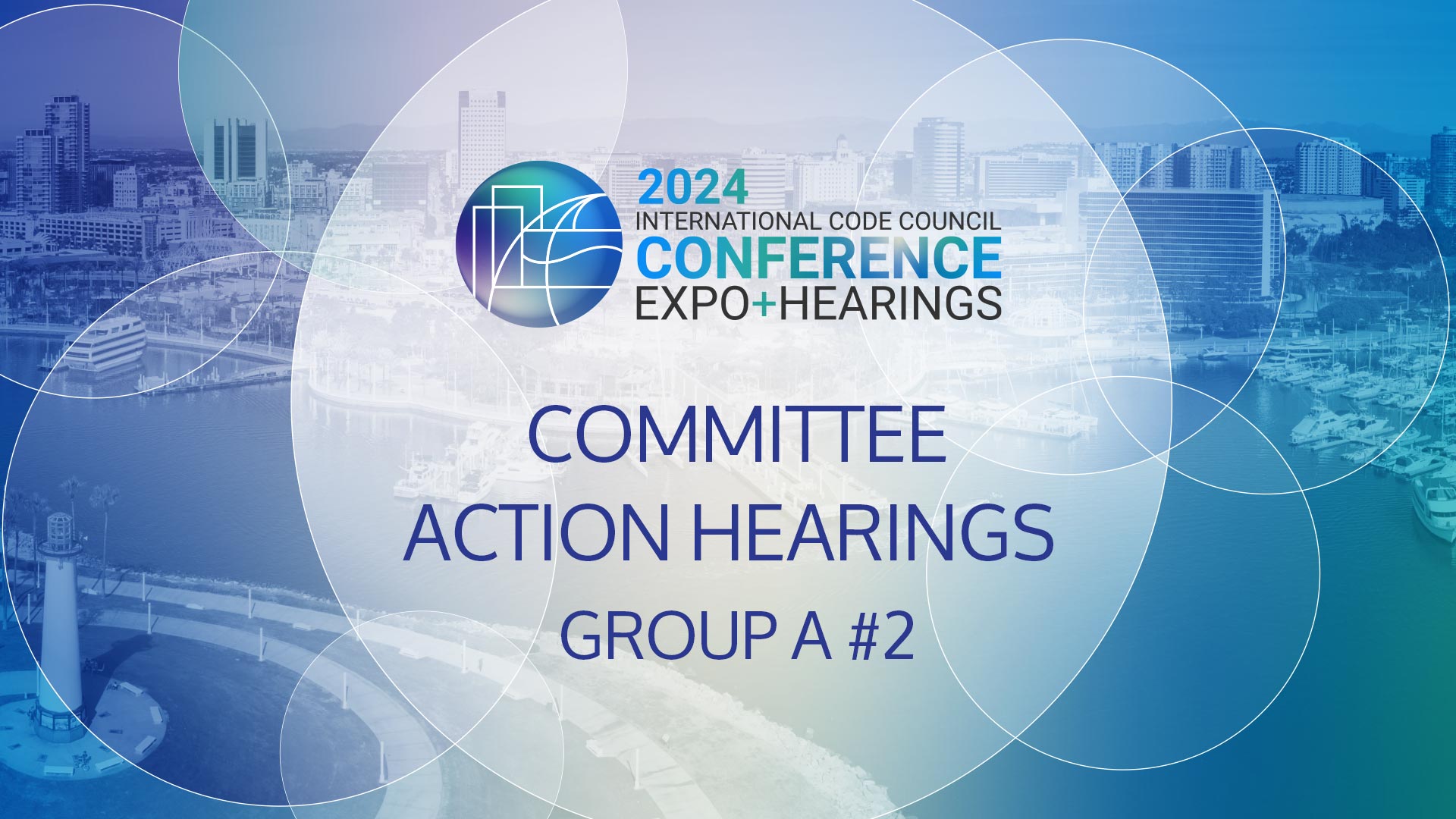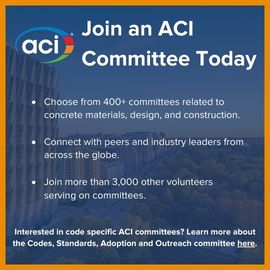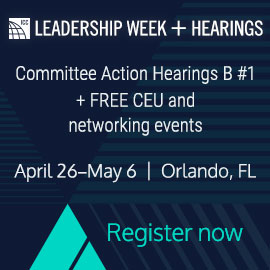
Year: 2024
Protected: 2024 Conference – Webcast – testing
Montana Strengthens Building Safety and Resilience by Adopting ICC/MBI Off-Site Construction Standards
Helena, Montana – On September 20, 2024, the state of Montana approved the adoption of the International Code Council’s and Modular Building Institute’s (MBI) Standards 1200 and 1205. The adoption marks Montana’s commitment to the expanded use of off-site construction and the promotion of greater regulatory consistency. The standards were adopted alongside Montana’s update to the 2021 editions of the International Codes®.
The Code Council and MBI developed ICC/MBI Standard 1200-2021: Standard for Off-Site Construction: Planning, Design, Fabrication, and Assembly and ICC/MBI Standard 1205-2021: Standard for Off-Site Construction: Inspection and Regulatory Compliance to provide best practices based on existing off-site construction programs and support consistency and efficiency in how off-site construction is approved and inspected. The ICC/MBI Standards for Off-Site Construction aid communities in advancing off-site construction while adhering to local building codes.
Montana joins Virginia, Utah and the U.S. General Services Administration as adopters of these standards.
“With this adoption, Montana has made a significant commitment to enhance building safety and affordability, and the Code Council is committed to supporting its success,” said Code Council Chief Executive Officer Dominic Sims, CBO. “We commend the state for recognizing what the standards bring to its communities but also to the Mountain West region at large.”
Off-site construction is a rapidly growing, innovative construction technique, that creates affordable housing with greater speed to market than traditional construction methods. Off-site construction can also support jurisdictions in achieving their goals for sustainability and jobsite safety.
More information about off-site construction can be found here.
###
About the International Code Council
The International Code Council is the leading global source of model codes and standards and building safety solutions. Code Council codes, standards and solutions are used to ensure safe, affordable and sustainable communities and buildings worldwide.
International Code Council Initiatives Highlighted in 2024 Breakthrough Agenda Report
Washington D.C.– On September 26, 2024, the International Energy Agency (IEA) released the third annual Breakthrough Agenda Report. The report provides an annual update on progress against the Breakthrough Agenda, which is a collaborative framework supported by 59 national governments aimed at accelerating action on climate change. The Buildings Breakthrough was adopted at the United Nations Framework Convention on Climate Change (UNFCCC) 28th Conference of the Parties (COP28) in Dubai last year. The Buildings Breakthrough calls for the achievement of near-zero emissions and resilient buildings by 2030.
The 2024 Breakthrough Agenda Report assesses progress made from the previous year and provides recommendations for additional progress that is needed and opportunities for tangible and collective action. Some of these opportunities include several of the International Code Council’s initiatives mentioned specifically in the 2024 Report.
The Code Council launched the Building Capacity for Sustainable and Resilient Buildings initiative in support of the Buildings Breakthrough at COP28. The Initiative focuses on capacity-building resources (e.g. policies, tools, organizational entities) needed to create a regulatory ecosystem for the effective implementation and enforcement of building codes, including energy codes.
In addition to the Initiative, the report also highlights the collaboration between the American Society of Heating, Refrigerating and Air-Conditioning Engineers (ASHRAE) and the Code Council to jointly develop an international standard (ASHRAE/ICC Standard 240P). This standard will support quantification of greenhouse gas (GHG) emissions across the lifecycle of a building to provide consistency in verification and reporting and is expected to open for public review later this year.
“The Code Council has consistently emphasized the vital influence buildings have on the sustainability and resilience of the built environment,” said Code Council Vice President of Innovation Ryan Colker. “Having our efforts recognized by global leaders as part of the solution to both reducing global GHG emissions and improving building resiliency acknowledges the potential global impact of the solutions that we have developed. We will continue to develop and deploy solutions that will assist governments and organizations seeking to achieve climate adaptation and mitigation goals.”
###
About the International Code Council
The International Code Council is the leading global source of model codes and standards and building safety solutions. Code Council codes, standards and solutions are used to ensure safe, affordable and sustainable communities and buildings worldwide.
2024 Conference – App
Conference App
This year’s ICC Conference App, your source for all schedules and information, is now available!
All schedules, information and class materials are only available on the ICC Conference App. It features the conference agenda, code hearings schedule, speakers, session handouts, directory, and event details.
Download the App
The App is accessible from all devices: smartphones, tablets, laptops and desktops and is available for Apple and Android devices. It’s also available on the web.
Find the App quickly in stores by searching for: iccac24.
You can use the Mobile App to:
- Create your own schedule
- Search for classes and events
- Quickly find event locations
- Stay up-to-date with event announcements
- Learn about speakers and sponsors
- See who else is attending and network
- Access speaker presentations and documents
- Learn about local hotels, dining and attractions
Update on Hurricane Helene
Update on Hurricane Helene
Update on Hurricane Helene
The International Code Council is deeply saddened by the loss of life and devastation caused by deadly Hurricane Helene. Our thoughts are with those affected during this incredibly difficult time.
The Category 4 hurricane made landfall on Florida’s Big Bend on Thursday, September 26, 2024, bringing with it 140 mph winds, 15-foot storm surge and torrential rain. As the storm moved north over the weekend, it passed through Georgia, the Carolinas, and the Tennessee River Valley, bringing catastrophic flooding and landslides that have left communities isolated and destroyed. Millions of people remain without power, food and water. Search and rescue efforts are still active in several states. Government officials and aid groups are working to restore power and bring in basic supplies to the hardest hit areas. More than 100 people have lost their lives, and the death toll is expected to rise as search and rescue missions continue. Early estimates on damage are in the billions of dollars.
Disaster Recovery Resource for Building Safety Professionals
When disasters strike, codes and standards serve as a baseline for the return to safe, sanitary, and habitable buildings. Code officials and their floodplain management counterparts rely on support from emergency managers and community leaders to help secure the critical resources needed to ensure the health, safety, and welfare of the community. To that end, FEMA has a disaster recovery policy specifically aimed at providing much-needed assistance for code officials and floodplain managers during disaster response and initial recovery for up to 180 days following a major disaster declaration.
Learn how to apply for building code administration and enforcement assistance here. This policy, administered under FEMA’s program, offers reimbursement for critical community functions such as building code administration, code enforcement, floodplain management administration and enforcement, and conducting substantial damage survey inspections in affected communities.
If you need assistance, please reach out to us through your regional Government Relations representative.
For more information, visit the Code Council’s resource page.
Download FEMA's DRRA 1206 resource here.
As an aid to community disaster response, the Code Council and the National Council of Structural Engineers Associations (NCSEA) sponsor the Disaster Response Alliance (DRA). The DRA maintains a national database of skilled, trained, and certified building safety professionals who are standing by and ready to assist communities in need. The DRA has assembled a cadre of skilled code officials, engineers, and others from across the country who are willing to assist with post-disaster safety assessments, building damage assessments, inspections, and surge support for other code-related functions. The Disaster Response Alliance brings together skilled, volunteer second responders in one place for easy access and quick mobilization. Federal, state, local, tribal, and territorial entities may request assistance directly through the DRA website.
Interested in becoming a DRA resource?
The DRA is always looking for volunteers. If you or someone you know is interested in becoming a DRA second responder resource, please visit the Volunteer Now link on the DRA website. Architects, engineers, and building safety professionals willing to make a difference during times of disaster are encouraged to apply. The DRA is also looking for individuals with specialized skills, knowledge, or abilities such as plans examiners, permit technicians, and building inspectors.
Preparing for Hurricane Helene
Preparing for Hurricane Helene

Image source: NOAA.gov
The International Code Council is monitoring Hurricane Helene as it continues to track northward through the Gulf of Mexico this week. Hurricane Helene is expected to make landfall on the Florida Gulf Coast as a Category 3 hurricane during the evening of Thursday, September 26. After substantial weakening, Helene is forecast to pass through Alabama and Georgia on Friday, September 27, and then north to South Carolina, North Carolina, Tennessee and the Midwest by the weekend.
Preparing for the Storm
Tropical storm force winds from Hurricane Helene may extend upward to 111-129 miles out from the center of the storm. The risk of impact from life-threatening storm surge and damaging hurricane-force winds will continue to increase along the Florida Panhandle and the Florida West Coast. Well-built framed homes may incur major damage or removal of roof decking and gable ends. Expect flash flooding and urban flooding across portions of Florida.
Many trees could be snapped or uprooted, potentially blocking numerous roads. Electricity and water may be unavailable for several days to weeks after the storm passes. The possibility exists for isolated flash flooding and urban flooding across the Southeastern U.S., including the Appalachians and the Tennessee Valley through Friday. If you live in the forecast area, it’s important to prepare now:
- Check/replace emergency supplies and store bottled drinking water.
- Review evacuation plans.
- Keep a supply of flashlights and extra batteries handy.
- Clean storm gutters and drains.
- Prepare your home for high winds and rain.
- Repair/replace storm shutters.
- Check your property insurance policy for appropriate coverage.
For the latest forecast and additional safety information, please visit the National Hurricane Center and the Code Council’s hurricane safety and resources page.
Resources for the state of Florida can be found here: Tropical Storm Helene | Florida Disaster.
If you need assistance, please reach out to us through your regional Government Relations representative.
Disaster Recovery Resource for Building Safety Professionals
When disasters strike, codes and standards serve as a baseline for the return to safe, sanitary, and habitable buildings. Code officials and their floodplain management counterparts rely on support from emergency managers and community leaders to help secure the critical resources needed to ensure the health, safety, and welfare of the community. To that end, FEMA has a disaster recovery policy specifically aimed at providing much-needed assistance for code officials and floodplain managers during disaster response and initial recovery for up to 180 days following a major disaster declaration.
Learn how to apply for building code administration and enforcement assistance here. This policy, administered under FEMA’s program, offers reimbursement for critical community functions such as building code administration, code enforcement, floodplain management administration and enforcement, and conducting substantial damage survey inspections in affected communities.
For more information, visit the Code Council’s resource page.
Download FEMA's DRRA 1206 resource here.
International Code Council Testifies Before the U.S. House’s Committee on Transportation and Infrastructure on Resilient Building Codes
Washington D.C. – On Wednesday, September 25, 2024, at 10 AM ET, International Code Council Past Board President Cindy Davis testified before Congress on the importance of building safety code adoption to boost community resilience. Her testimony was presented to the Subcommittee on Economic Development, Public Buildings and Emergency Management in conjunction with its hearing titled Examining the Role and Effectiveness of Building Codes in Mitigating Against Disasters.
Davis detailed the Code Council’s long-time and ongoing efforts to ensure the Code Council’s model codes (the International Codes®, or I-Codes) integrate the latest hazard resistant designs, best practices and lessons learned post disaster. She outlined studies confirming that the adoption and implementation of current model building codes are central to creating effective mitigation strategies for lessening the impacts of natural hazards, including hurricanes, flooding, hail, earthquakes, tornados and wildfires. Additionally, she shared that contemporary research continues to find that modern model building codes have no appreciable implications for housing affordability.
“From its earliest days, the Code Council has emphasized the importance of hazard mitigation within the codes and standards it develops,” said Cindy Davis, CBO. “The Code Council welcomes the longstanding, bipartisan recognition of codes’ value and encourages continued federal support for their greater use to protect communities across the U.S. from growing hazard risk.”
Davis encouraged support for Federal Emergency Management Agency (FEMA)’s Building Resilient Infrastructure and Communities (BRIC) Codes Plus Up program, which recognized that BRIC’s prior structure was preventing its broader use for code improvements. Code investments represent less than two hundredths of a percent of BRIC’s spending, for an activity that FEMA views as one of, if not the most impactful, community mitigation measures. She also supported changes to the BRIC scoring criteria that better recognized local efforts to integrate resilient codes, which the Code Council supports. Finally, she encouraged implementation of a cost share adjustment to support states adopting impactful and cost saving resilience measures.
“Strong building codes save lives and protect property,” said Russell Strickland, Maryland Sec. of Emergency Management. “Moreover, the research is clear that building code adoption and enforcement are among the most cost-effective measures that governments can enact.”
Finally, she encouraged the Committee to ensure that federal codes policy remains focused on codes that are resilient, consensus-based, correlated and cost effective, expressing concern over an unnecessary expansion of FEMA’s code recognitions to the thousands of codes developed in the U.S.
“To date, federal efforts have appropriately focused on the codes and standards – including the I-Codes and many others – that are comprehensive and have demonstrated mitigation benefits,” said Cindy Davis, CBO. “That needs to continue. We should not be handing out participation trophies when it comes to building safety and community resilience.”
The I-Codes are a comprehensive set of model codes that are regularly updated through a rigorous, transparent and democratic process and are currently adopted in all 50 U.S. states. These codes are cost effective and help support building safety and resiliency in communities around the world. Communities that adopt and enforce up-to-date building codes are more resilient when faced with disasters.
###
About the International Code Council
The International Code Council is the leading global source of model codes and standards and building safety solutions. Code Council codes, standards and solutions are used to ensure safe, affordable and sustainable communities and buildings worldwide.
2024 Conference – Webcast
Webcast
Watch a live webcast of the Annual Business Meeting and
Committee Action Hearings, Group A #2
CAH Hearings Group A #2 have concluded.
2027 IECC Scope, Intent and Board Commentary Final – Public Notice
2027 IECC Scope, Intent and Board Commentary Final – Public Notice
The 2027 IECC Scope and Intent, including additional Code Council Board of Directors Commentary, has been finalized after careful consideration of public comments. The following represents the final scope, intent, and associated commentary for both the commercial (CECDC) and residential (RECDC) committees.
Please refer to the IECC related committee page for more information on the committee activity: https://www.iccsafe.org/committees/energy-iecc/
Commercial | Scope & Intent
C101.2 Scope.
This code applies to the design and construction of new and existing buildings including additions, alterations, repairs and changes of occupancy and use, not covered by the IECC Residential.
C101.3 Intent.
The purpose of the International Energy Conservation Code-Commercial is to provide market-driven, enforceable requirements that achieve a reasonable level of energy efficiency that is safe, technologically feasible, and lifecycle cost effective, considering economic feasibility, including potential costs and savings for consumers and building owners, and return on investment. Additionally, the code includes ANSI/ASHRAE/IES 90.1 as a compliance method. Requirements contained in the code will include prescriptive and performance-based compliance options. The code will provide for the safe and efficient use of energy sources and is not intended to eliminate any fuel type.
The code may include non-mandatory provisions incorporating additional energy efficiency and greenhouse gas reduction resources and provisions that lead to achievement of zero energy buildings. Such provisions shall either be (i) in optional appendices or (ii) in the base code provided as options where compliance with the code is still possible without complying with those provisions. This code’s intent statement does not require the exclusion of provisions contained in prior editions of this code.
Commercial | Commentary
The ICC Board of Directors provides the following additional commentary to be written in the IECC Commentary and provided to the IECC-C Development Committee in advance of the Commentary being published:
- The code shall provide a minimum base energy code with prescriptive and performance-based pathways that take into consideration feasibility of technology and costs impacts to building owners and occupants. The code also provides ANSI/ASHRAE/IES Standard 90.1 as a compliance method.
- The IBC Chapter 13 will continue to reference the IECC Commercial provisions and the IECC shall continue to be referenced in Chapter 13 of the International Building Code.
- Provisions of the code shall not promote or penalize specific types of equipment or fuel sources.
- The code will aim to simplify code requirements to facilitate the code’s use and compliance rate. The code is updated on a three-year cycle with each subsequent edition providing increased energy savings over the prior edition.
- This code is intended to provide flexibility to permit the use of innovative approaches and techniques to achieve this intent. This code is not intended to abridge safety, health or environmental requirements contained in other applicable codes or ordinances.
- Provisions that provide for greenhouse gas reductions or resilience benefits (e.g., electric vehicles, readiness, demand response, and onsite or off-site energy storage or renewable energy) as well as provisions to achieve zero energy buildings shall only be included either in an optional appendix/appendices or as part of a compliance path (e.g., credits system, simulated performance) where compliance is still possible without using or promoting such measures (e.g., through strictly energy efficiency measures).
- Exception: Current provisions in the 2024 IECC regarding mandatory requirements for renewable energy (section C405.15) may remain in the body of the code as mandatory and may be amended so long as such amendments do not exceed existing requirements.
Residential | Scope & Intent
R101.2 Scope.
This code applies to the design and construction of new and existing detached one- and two-family dwellings and multiple single-family dwellings (townhouses) and Group R-2, R-3 and R-4 buildings three stories or less in height above grade plane, including additions, alterations, repairs and changes of occupancy and use.
R101.3 Intent.
The purpose of the International Energy Conservation Code-Residential is to provide market-driven, enforceable requirements that achieve a reasonable level of energy efficiency that is safe, technologically feasible, and life cycle cost effective, considering economic feasibility, including potential costs and savings for consumers and building owners, and return on investment. Requirements contained in the code will include prescriptive and performance-based compliance options. The IECC residential provisions shall include an update to Chapter 11 of the International Residential Code. The code will provide for the safe and efficient use of energy sources and is not intended to eliminate any fuel type.
The code may include non-mandatory provisions incorporating additional energy efficiency and greenhouse gas reduction resources and provisions that lead to achievement of zero energy buildings. Such provisions shall either be (i) in optional appendices or (ii) in the base code provided as options where compliance with the code is still possible without complying with those provisions. This code’s intent statement does not require the exclusion of provisions contained in prior editions of this code.
Residential | Commentary
The ICC Board of Directors provides the following additional commentary to be written in the IECC Commentary and provided to the IECC-R Development Committee in advance of the Commentary being published:
- The code shall provide a minimum base energy code with prescriptive and performance-based pathways that take into consideration feasibility of technology and costs impacts to building owners and occupants.
- The IECC Residential Provisions shall continue to be coordinated with Chapter 11 of the International Residential Code.
- Provisions of the code shall be based on improved energy performance, such as through energy efficiency ratings or demonstrated simulation model performance and remain neutral to fuel source and do not promote or penalize specific types of equipment or fuel sources.
- The code will aim to simplify code requirements to facilitate the code’s use and compliance rate. The code is updated on a three-year cycle with each subsequent edition providing increased energy savings over the prior edition.
- This code is intended to provide flexibility to permit the use of innovative approaches and techniques to achieve this intent. This code is not intended to abridge safety, health or environmental requirements contained in other applicable codes or ordinances.
- Provisions that provide for greenhouse gas reductions or resilience benefits (e.g., electric vehicles, readiness, demand response, and onsite or off-site energy storage or renewable energy) as well as provisions to achieve zero energy buildings shall only be included either in an optional appendix/appendix or as part of a compliance path (e.g., credits system, simulated performance) where compliance is still possible without using or promoting such measures (e.g., through strictly energy efficiency measures).





